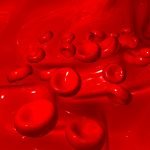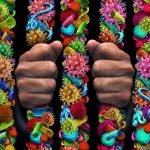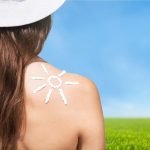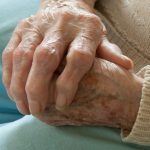Spreading Our Wings a Little More: Every Bit Helps
Education
David J. Schleich, PhD
The National Student Clearinghouse Research Center (NSCRC) reports that, for 6 years now, postsecondary enrollments in America have declined. In fact, for the first time since 2010, overall postsecondary enrollments fell below 18 million students nationwide. (That’s a drop of more than 2 million students. Argh!) The Center publishes updated summaries every December and May, providing unduplicated headcount data based on institutional sector, enrollment intensity, age group, and gender. Because most Title IV, degree-granting institutions provide the NSCRC with enrollment statistics several times per year, what we know is quite current. In the Health Professions and Related Programs category, for example, there was a -2.2% decline in 2017, which slowed to -1.3% by 2019. The year 2020 looks more like 0.8% if one had to project. (NSCRC, 2019)
Recent enrollment drops in naturopathic cohorts are consistent with this trend. Our historical way of growing enrollment has been to increase each school’s population along with adding new programs where we can, thereby growing the overall matriculation and graduation numbers, which in turn fuel the growth of the profession. We began the current era with NCNM back in 1956, followed by John Bastyr College and the Ontario College of Naturopathic Medicine in 1978 (whose successor, CCNM, grew to become the largest program in North America). Also, in the 1990s and early 2000s, SCNM, Bridgeport, and NUHS started up, as did a California campus for Bastyr, augmenting professional formation even further. That model of growth, however, has been bruised by the kind of worrying data that the NSCRC provides, and by at least 1 actual “teach out,” such as at Bridgeport. No new campuses or programs are on the horizon at the moment. Promising new additions at MUIH (in Baltimore) and SCUHS (in Whittier, CA) were recently abandoned.
One strategic direction for the profession, then, is to work hard to generate new programs within existing institutions where operational support already exists and where potential new student recruitment streams can be tapped. As well, and as a way of funding this kind of growth, there are programs which the remaining naturopathic colleges and universities could initiate that not only complement what we already do, but also broaden the medicine’s impact in civil society by including naturopathic doctors more and more in the mainstream.
Potential Areas for Growth
This strategy of differentiating programming within existing naturopathic institutions is expensive and takes time; however, the benefits endure. As we contribute to these allied professional streams, we concomitantly enhance the medicine’s profile in related professional bodies, such as in public health, nutrition, gerontology, and the expressive arts. Let us take a closer look at these 2 latter paths, gerontology and expressive arts, as potential areas for growth.
Both of these fields are not only robust in terms of employability, but also highly relevant to the character and mission of naturopathic medicine. For example, a colleague is currently doing the groundwork for a proposed conference in Chicago on Geriatrics and Gerontology. The focus of the event is “healthy living and healthy aging.” “Isn’t that what we do all the time?” she asks potential naturopathic speakers and interested sponsors. Sessions are contemplated in holistic eldercare, sleeping and aging, dementia, nutrition and aging, exercise strategies for the elderly, neuroplasticity and aging, aging diseases, stress and skin disorders, Alzheimer’s disease, mental health, and more. The United States Census Bureau, she indicates by way of context, reports that older people are projected to outnumber children for the first time in US history by 2035. We need all hands on deck to meet this need, and especially to meet it from a natural medicine perspective, since the biomedicine approach is invariably not about prevention.
Naturopathic Gerontology & Geriatrics
Naturopathic physicians have indeed long been interested in a blend of Geriatrics and Geriatric Medicine, which includes treatments that default far less to symptom control and protracted drug prescriptions, and are much more about vital longevity and prevention. The literature shows that numerous research studies and clinical trials have been carried out focusing on osteoarthritis, hypertension and cardiovascular disease, stroke, late-life cognitive disorders and depression, and anxiety and sleep disturbance, to name a few. (Siddiqui, 2014) Siddiqui et al comment that “the use of CAM is predominantly more popular in older adults … [who] turn to CAM therapies for treating their conditions, as they believe these therapies are generally more ‘natural’ and safer than conventional medicine … and are consistent with their beliefs and philosophical orientation toward health and illness.”
Notwithstanding this invitational terrain, the range of programming enabling naturopathic professionals to focus on treating the health problems of elderly patients is limited among the CNME-accredited programs in North America. The benefits of incorporating CAM into geriatric care are being more widely considered, and there is strong interest in more Naturopathic Gerontology and geriatric research. (Siddiqui, 2014) The biomedicine industry, on the other hand, has a clear and well-funded path for this specialty. The way to a geriatric specialty includes, usually, a 3-year residency for board certification in internal medicine or family medicine, followed by a 1 or 2-year fellowship in an approved program of geriatrics. These steps are capped by board examinations, and graduates are propelled into a burgeoning market as certified geriatricians.
Because gerontology is multi-disciplinary (researchers, caregivers, administrators, and policy-makers), the philosophical and methodological approaches of the allopathic model are strengthened. We are only marginally present in this broad array of careers and intersecting fields.
Expressive Arts as Allied Programs
The expressive arts is another arena where naturopathic principles would be more welcome and where demand for skilled practitioners is burgeoning. Stuckey & Nobel (2010) tell us that in the key areas of creative artistic expression, “there are clear indications that artistic engagement has significantly positive effects on health” (p.11). As a case in point, there is recent research which indicates that grey and white matter neuroplasticity is tied directly to the acquisition of skills and the expanding concern about atrophying cognitive skills and declining motor function. DT-MRI (Diffusion-Tensor Magnetic Resonance Imaging), for example, sheds light on connectivity among parts of our brain, it seems, and patients who are encouraged to fire up their neurons by learning their scales (music), dancing twice a week, or painting routinely are flexing muscles and synapses which pharmaceuticals and poor diets in seniors’ homes often harm. Through 1 or more of these efforts, such as learning scales, assembling recognizable melodies into chord cascades, and pushing to achieve more dexterity in arms and legs – and buoyed by naturopathic interventions related to physical medicine, nutrition, botanicals, and homeopathy – seniors can enhance the whole enchilada as these efforts light up and strengthen all those cross-hemispheric connections. The literature speaks to inconsistencies between musicians and non-musicians about the white matter structure related to “internal capsule and corticospinal tracts.” (Moore et al, 2014) The peer-reviewed literature of expressive arts and healing also speaks to the remarkable power of creativity to enhance overall health.
The absence of illness is not enough, the naturopathic doctor will proclaim. Flattened symptomology is not enough. There are numerous related creative arts therapies that significantly complement the work of naturopathic physicians who build on the natural inclinations of the body, the mind, and the spirit to eschew the drift toward pharmaceutical and reductionist therapies so prevalent in the integrative wheelhouse; this is appealing, even to many of our emerging doctors. Powerful partnerships in the expressive arts can include art therapists, music therapists, drama therapists, and dance therapists, for example. Therapeutic programs can crop up in our practices, in hospitals, assisted care settings, and community centers and agencies.
Expanding the Curriculum
As students prepare for careers in these areas, alongside their naturopathic colleagues, the ensuing affiliations translate into more gusto for the profession in the form of interprofessional referrals, shared governance, and a broader recruitment base. Is there a place for dance-movement therapy, drama therapy, music, storytelling, drawing, and other forms of art therapy side by side in our schools? Decidedly yes. There are even opportunities within naturopathic medical education and research to study the relationship of creative expression with disorders such as schizophrenia or dementia, end-of-life, and the place of spirituality in medicine.
The literature is abundant. There is, for example, the work of Stuckey & Nobel (2010) that focused on music engagement, visual arts therapy, movement-based creative expression, and expressive writing. Their meta-analysis of the literature zeroed in on music, visual arts, movement-based dance, theater, and creative writing: music engagement (eg, Aldridge’s [1993] work on the use of music in the control of chronic cancer pain; or Bolwerk’s research [1990] with myocardial infarction patients); visual arts (eg, Puig et al’s remarkable work [2006] on the efficacy of creative arts therapies with cancer patients – a successful product of the University of Florida’s Arts in Medicine® program); movement-based creative expression focusing on dance and movement to help treat stress and anxiety (eg, Greenspan’s work [2007] involving Tai chi with older adults; theatre (eg, Noice’s work [2004] targeting cognitive functioning and quality-of-life issues important for independent living); and expressive writing (eg, Petrie et al’s remarkable work [2004] on the effect of written emotional expression on immune function; or Garland et al’s unique study [2007] combining visual, music, movement, and expressive writing in the treatment of cancer patients). With regards to expressive writing, the evidence is there that it leads to “statistically significant improvement in various measures of physical health, reductions in visits to physicians, and better immune system functioning” among patients. (Stuckey & Nobel, 2010)
Given that we believe in a very wide ecological spectrum for our patients, within whom causative agents and ensuing pathogenic evolutions spell trouble, we understand that the imbalances in the lives of our patients must be addressed. Ideally, we can strive to be partners with our patients in constructing all our lives-long a psychosocial framework for well-being (physical, mental, social, spiritual), much enhanced by an enduring, deep connection to expressive arts providers and practitioners.
In an area of profound chronic presentation, more than remedial action is essential. As we grow our reach and repertoire, we walk the talk of preventative action and spread the word. As pointed out by Staricoff & Loppert ( 2003), “there is evidence that engagement with artistic activities, either as an observer of the creative efforts of others or as an initiator of one’s own creative efforts, can enhance one’s moods, emotions, and other psychological states, as well as have a salient impact on important physiological parameters.” Additionally, rolling out such programs in our naturopathic schools builds the profession and pays some bills at the same time.
References:
Aldridge, D. (1993). Music therapy research: I: A review of the medical research literature within a general context of music therapy research. Arts Psychother, 20 (1), 11-35.
Arts Health Network Canada. (2015). Creative Arts Therapies. Available at: https://artshealthnetwork.ca/arts-health-101/creative-arts-therapies. Accessed February 29, 2020.
Bolwerk, C. A. (1990). Effects of relaxing music on state anxiety in myocardial infarction patients. Crit Care Nurs Q, 13 (2), 63-72.
Garland, S. N., Carlson, L. E., Cook, S., et al. (2007). A non-randomized comparison of mindfulness-based stress reduction and healing arts programs for facilitating post-traumatic growth and spirituality in cancer outpatients. Support Care Cancer, 15 (8), 949-961.
Greenspan, A. I., Wolf, S. L., Kelley, M. E., O’Grady, M. (2007). Tai chi and perceived health status in older adults who are transitionally frail: a randomized controlled trial. Phys Ther, 87 (5), 525-535.
Moore, E., Schaefer, R. S., Bastin, M. E., et al. (2014). Can musical training influence brain connectivity? Evidence from diffusion tensor MRI. Brain Sci, 4 (2), 405-427.
National Student Clearinghouse Research Center. (December 16, 2019). Fall 2019 Current Term Enrollment Estimates. NSCRC Web site. https://nscresearchcenter.org/current-term-enrollment-estimates-2019/. Accessed February 29, 2020.
Noice, H., Noice, T., Staines, G. (2004). A short-term intervention to enhance cognitive and affective function in older adults. J Aging Health, 16 (4): 562-585.
Petrie, K. J., Fontanilla, I., Thomas, M. G., et al. (2004). Effect of written emotional expression on immune function in patients with human immunodeficiency virus infection: a randomized trial. Psychosom Med, 66 (2), 272-275.
Puig, A., Lee, S. M., Goodwin, L., Sherrard, P. (2006). The efficacy of creative arts therapies to enhance emotional expression, spirituality, and psychological well-being of newly diagnosed Stage I and Stage II breast cancer patients: A preliminary study. Arts Psychother, 33 (3), 218-228.
Ross, E. A., Hollen, T. L., Fitzgerald, B. M. (2006). Observational study of an Arts-in-Medicine Program in an outpatient hemodialysis unit. Am J Kidney Dis, 47 (3), 462-468.
Siddiqui, M. J., Min, C. S., Verma, R. K., Jamshed, S. Q. (2014). Role of complementary and alternative medicine in geriatric care: A mini review. Pharmacogn Rev, 8 (16), 81-87.
Staricoff, R., Loppert, S. (2003). Integrating the arts into health care: Can we affect clinical outcomes? In: Kirklin, D., Richardson, R. (Eds.). The Healing Environment: Without and Within. London, England: Royal College of Physicians: 63-80.
Stuckey, H. L., Nobel, J. (2010). The connection between art, healing, and public health: a review of current literature. Am J Public Health, 100 (2), 254-263.

David J. Schleich, PhD, is President Emeritus of the National University of Natural Medicine (NUNM), where he served from 2007 to 2019; former president of Truestar Health; and former CEO and president of CCNM (1996 to 2003). Previous posts have included appointments as vice president academic of Niagara College, and administrative and teaching positions at St Lawrence College, Swinburne University (Australia) and the University of Alberta. His academic credentials have been earned from the University of Western Ontario (BA), the University of Alberta (MA), Queen’s University (BEd), and the University of Toronto (PhD).










